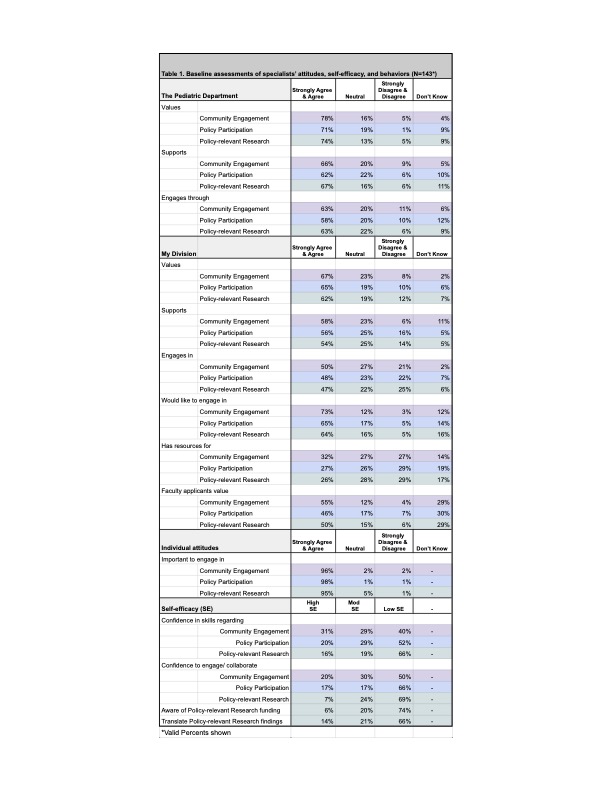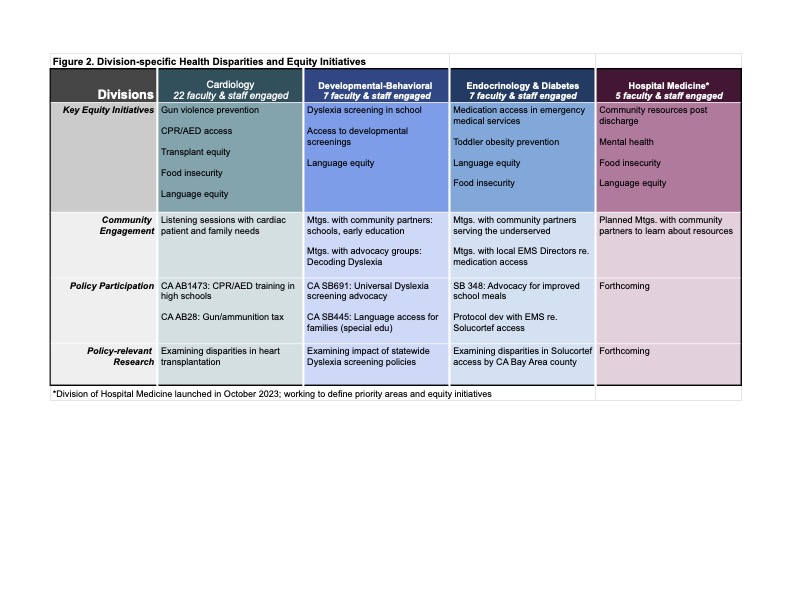Health Equity/Social Determinants of Health
Session: Health Equity/Social Determinants of Health 10
347 - Engaging pediatric specialists to advance child health equity through community engagement, policy participation, and policy-relevant research
Sunday, May 5, 2024
3:30 PM - 6:00 PM ET
Poster Number: 347
Publication Number: 347.1948
Publication Number: 347.1948
- JB
Janine S. Bruce, DrPH, MPH (she/her/hers)
Senior Research Scholar
Stanford University School of Medicine
Stanford, California, United States
Presenting Author(s)
Background: Health equity can be addressed via community engagement, policy participation, and policy-relevant research, but few avenues exist to engage pediatric specialists. Departments of pediatrics are well-positioned to support specialists to address health disparities.
Objective: To 1) examine pediatric specialists’ attitudes, self-efficacy, and behaviors to advance health equity, and 2) describe an early-stage initiative by pediatric specialists to identify and address health inequity.
Design/Methods: In January 2023, faculty/staff in 8 specialty divisions were surveyed to assess baseline attitudes, self-efficacy and behaviors of equity engagement at department, division, and individual levels. Four divisions (cardiology, developmental-behavioral peds, endocrine, hospital medicine) are receiving training, and assistance to identify health disparities and engage in equity initiatives; the remaining 4 will begin in 2024.
Results: 143 people across eight pediatrics divisions were surveyed (faculty61%, staff 23%, fellows 4%). Participants practiced in outpatient, inpatient, and mixed settings (24%, 26%, 29%, respectively). Most participants strongly agreed/agreed their department and division valued work addressing health equity (range of 62-78%, Table 1). Perceived levels of support from their department and divisions were slightly lower (range of 54-66%). Participants were much less likely to report their division had necessary resources to support this work (range of 26-32%). At an individual level, participants strongly agreed/agreed it was important to contribute to community engagement (96%), policy participation (98%), and policy-relevant research (95%), but few felt confident to engage in such activities (20%, 17%, 7% respectively).
Faculty/staff identified division-specific disparities, some unique to their field (transplant equity) and others were overarching (food insecurity, Figure 2). To date, equity initiatives included 10 community meetings, 10 policy efforts (e.g., signed letters, meetings with policy advocates.
Conclusion(s): Faculty/staff identified specialty-specific health inequities and engaged in multi-level equity initiatives. The faculty/staff interest was high despite the need for training and resources. The inequity topics were sometimes field-specific, while others were shared across fields. This early work demonstrates endeavors to address pediatric health inequities through community and policy engagement could expand into the sphere of specialty care.


